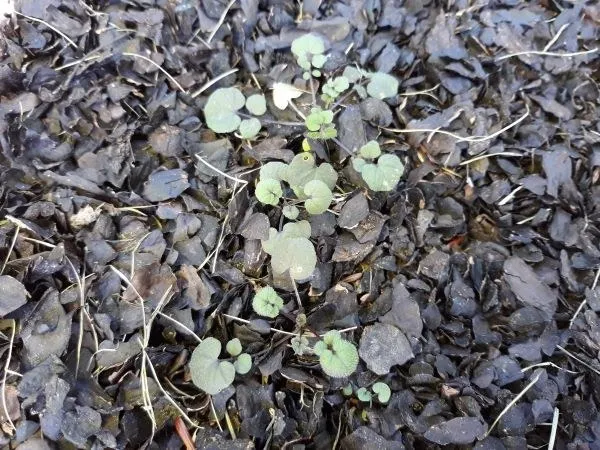Hairy Bittercress – A Winter Annual Weed to Watch

Beginning in early fall and throughout the warmer days of winter, I wander through my garden planning for spring and looking for weeds to pull. Summer annual weeds die with the first frost. Many perennial and biennial weeds have gone dormant. But you will find emerging in the coming cold months a class of weeds called winter annual weeds. Among them are common chickweed, deadnettle, henbit, shepherd’s purse, and Persian speedwell. My biggest nemesis in this group is hairy bittercress. I usually notice this weed emerging in the last days of summer.
Hairy bittercress (Cardamine hirsuta) is a member of the mustard family (Brassicaceae). It germinates in the fall and will continue to grow during warm spells throughout the winter. It really picks up growth in early spring. It dies when the weather gets hot in late spring or early summer and after it has dispersed its seeds. More than one generation can emerge in any given season because its seeds will germinate as long as the environment is moist and cool.
You will find hairy bittercress in your lawn where the turf is thin and in bare areas of your garden beds. Be on the lookout for bittercress in the containers you bring home from the garden center.
This is a small, low-growing weed. The plant develops as a basal rosette, like a dandelion. Two to four pairs of leaflets are arranged alternately on each leaf stem. The leaf size ranges from less than one-half inch to one inch, and the terminal leaf (the one at the end of the leaf stem) is the largest. The leaves are round or kidney-shaped. Thin fibrous flower stems emerge from the center of the rosette and grow from three to nine inches tall. Small white flowers form at the end of the stems. Each flower has four white petals that form in the shape of a cross. This weed blooms in Spring, when cool, moist conditions are present.
Hairy bittercress is a prolific seed producer. The seed pod is called a silique and can contain up to 30 seeds. As it matures, two valves coil within the seed pod. This allows the silique to explode, propelling seeds up to 16 feet. Botanists call this mechanism ballochory, meaning ballistic seed dispersal.
The most important step in eradicating hairy bittercress in your garden is to never, ever let this weed go to seed. As long as the ground is not frozen, it is easy to pull or dig up, fibrous roots and all. To reduce its numbers, prevent it from germinating by eliminating bare soil in your garden. Mulch your garden beds. Prevent bare spots in your lawn by developing a dense, vigorous turf.
As long as it has not set seed, you can add hairy bittercress to your compost pile. If it has not come into contact with herbicides, pesticides, or your dog’s bathroom habits, the leaves (not the fibrous flower stalks or seed pods) are also edible and quite nutritious. The leaves contain antioxidants, vitamin C, calcium, magnesium, and beta-carotene. Notwithstanding its name, the flavor is mild and peppery, not bitter. It is nice to add to a salad, a sandwich, or soup. Use it as soon after harvest as possible, as it wilts quickly.
This article was first published by the Penn State Extension on September 22nd, 2020.